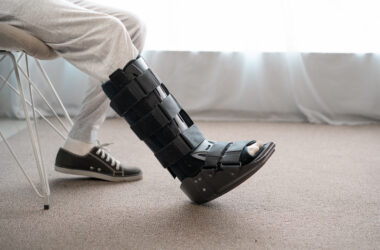Broken Glass Injuries
Broken Glass Injuries
January 23, 2018
During serious collisions, the windshield is one of the first things to break. In an effort to counter this, vehicle manufacturers began putting lamination made of an automotive grade urethane between the sheets of glass when producing windshields. In the event that the windshield breaks, the glass is intended to adhere to the vinyl sheets and not shatter throughout the cab. Unfortunately, even shatterproof windshields are not foolproof and most rear windshields and side windows do not even use this technology.
Although broken glass is an often overlooked risk, it can cause painful and disfiguring injuries, so if you sustained a laceration or another type of broken glass injury in a car crash that was not your fault, it is important to speak with an experienced car accident attorney who can help you seek compensation for your medical expenses.
Types of Glass Injuries
There are a variety of different kinds of glass injuries. Shards of glass produced upon impact, for example, can puncture the skin, while larger sheets tend to result in slash-type wounds. In some situations, small pieces of glass can even become lodged beneath the skin and must be removed surgically. Although all glass injuries are potentially dangerous and can result in damage not only to the skin, but also to underlying nerves, tendons, and blood vessels, the following types of glass injuries are the most common among car accident victims:
- Incisions or surface cuts, which usually completely sever the blood vessels and so tend to bleed freely. Because this free flow of blood washes out many potentially dangerous microorganisms, these wounds rarely become infected. Furthermore, incisions don’t usually result in damage to underlying tissue.
- Lacerations, which unlike incisions involve the tearing of the skin. For this reason, these wounds tend to have jagged edges and damaged tissue. In some cases, lacerations can even penetrate all the way through the skin, underlying skin tissue, muscle fibers, and bone. If dirt or other material comes into contact with the damaged tissue, the wound could also become infected. Deep level lacerations usually require sutures, stitches, or surgical intervention. Even after treatment, many victims suffer from muscle weakness, a loss of feeling due to nerve damage, and severe scarring.
- Amputation, which can result if a shard of glass is large enough to penetrate all the way through a limb. Amputation may also be necessary if the piece of glass severs an artery and causes major blood loss. While surgeons are often able to reattach a limb or stem arterial bleeding early enough to prevent loss of the limb, this is not always possible.
All but the most minor abrasions or surface level cuts require some sort of medical attention, whether it is cleaning and bandaging, stitches, or surgical repair. While these efforts can help reduce the severity of muscle damage or scarring, many victims suffer from disfigurement or disability for the rest of their lives. Fortunately, injured parties can cover the cost of treatment by collecting compensation from the person or entity who caused their injury.
Call Our Legal Team Today
To learn how our experienced car accident attorneys may be able to help you with your claim, please contact Lafferty, Gallagher & Scott, LLC at 419-241-5500 for a free consultation.
TESTIMONIALS





